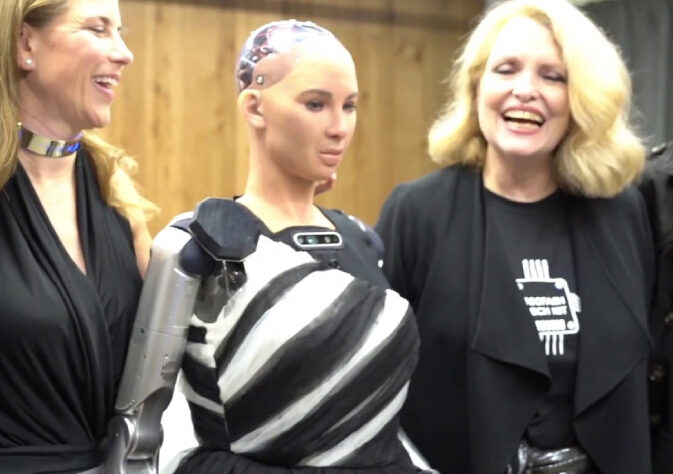Robots have been predicted to take over every aspect of human life, lending a helping hand in literally every field. Fashion and robotics have a long and fruitful partnership. Fashion companies can benefit from the use of robotics to improve business efficiencies. In the fashion industry, robotic technologies and automatic learning technology will automate almost any job with a high degree of routine and predictability. Therefore, every fashion design course in Chennai and other big cities of India includes robotics as a compulsory subject. Read more about how robots have altered the fashion industry in various ways, ranging from artificial intelligence to smart machines.
Impact Of Robots In Fashion Industry
Fashion is an expression of desire, and robots are style icons. The industry must anticipate both aesthetic and cultural trends, and robots are a trend that one cannot ignore. Fashion trends are changing as robots become more prevalent in our lives and become better than humans. Robots inspire fashion in modelling, manufacturing, and designing. Robotic arms can sew a garment that liquid polymers have stiffened. Soon, robots will design fashion clothing, predict trends, act as stylists, and even serve as personal valets for the rich and famous. Most importantly, the fashion industry is becoming increasingly aware that robots will mimic runway models soon.
The fashion industry has not fully embraced robotics about electronic commerce, as we have seen in other industries in today’s scenario. However, the significance of robots in recent times is well realized by fashion as they can take a person’s measurements and transform them into any desired shape in less than two minutes. This improves production rate and efficiency drastically.
It is best to examine how to use robots in fashion through a company’s production and manufacturing operations. Go through the steps mentioned below.
- The cost of a robot can range from $50,000 to USD 150,000, but reconditioned robots are less expensive and can be purchased for as little as USD 25,000.
- A robot can stiffen fabric with chemicals that cannot be handled by mankind, which will make the job easier in production.
- The use of small autonomous robots in manufacturing facilities can help eliminate low-wage labor and deliver high-quality products in a shorter amount of time.
Role Of Robots In Textile Manufacturing
Today, robots produce a limited range of basic clothing in most textile and fashion industries. They help increase production as collaborative robots can produce 10,000 pairs of jeans in 24 hours without excessive chemicals. A study states that the machine uses eight lasers and two robots to produce five million pairs of jeans ready for sale each year. A day will come when robots may revolutionize the way brands create products out of thread. For example, Adidas uses robots to strategically place different types of yarn to create the uppers of tennis shoes.
Furthermore, articulated robots are used to complete assembly and pick and place tasks, material removal, inspection, packaging, and dispensing. Cartesian robots are used for material removal, inspection, packaging and dispensing. Moreover, software-controlled robots can complete tasks faster and more precisely than humans. This is because software automation allows robots to cut and sew, add fabric, inspect for quality, and modify product specifications to meet specific customer needs.
Robots will be most useful in the manufacturing industry, reducing the time spent on production and stitching. Another advantage experienced by a company shows that moving materials with robots increased its daily efficiency by 122 per cent.

Scope For Robots In Retail Fashion
Fashion retailing is more efficient with automated systems transporting products from storage to packing stations staffed by humans. Hence, robots are becoming increasingly advanced, and fashion retailers use them to enhance their business. They are used in fashion retail stores to relieve their retail associates of mundane tasks and concentrate on customer-facing activities instead.
Many major fashion retailers are now testing robots on their sales floors, greeting customers with courteous smiles and retrieving items from shelves. Therefore, it is well-known that robots are transforming the retail industry in the current scenario. Fashion retailers have witnessed that robots perform tasks ten times more efficiently and consistently than humans. It was concluded from a case study in which robots reduced the cost of a retail unit by 20%. A classic example is Amazon which reduced its operating expenses by 20% with robots and helped customers receive better value for their money.
Robots can provide personalized services in the retail industry and help transform the industry in the future. They are an opportunity for retailers to gain a competitive advantage by adopting the technology amongst various sectors. Let us see the other effective means by which it aids retail, as suggested by experts from the fashion design institute in Chennai.
- Robots have been used in supply chain automation for decades and are moving products through warehouses.
- They play a major role in retail by assisting in logistics and management and providing exceptional customer service.
- They are used for inventory management, warehouse operations, and customer care support.
- Robots are proving to be a more effective alternative to skilled workers in warehouses and distribution centres to attract and engage customers.
- It will provide users with a more personalized shopping experience by reading their minds and scanning their preferences, personal style, and personality traits.
- Robots take the lead in professionalism when improving customer engagement and providing outstanding customer service.
- Robots can navigate the area with fewer interruptions, and workers can control the robots through a centralized interface.
Summing It Up
This article shows how robots can help various operations in the fashion sector. It is a proven fact that the garment industry is optimizing new technologies to embrace the future of robotics. Robots will become a mandatory item to create fashion designs from databases. Last but not least, robots will influence fashion apparel with human supervision and will do all the jobs assigned at a greater efficiency than mankind soon.

